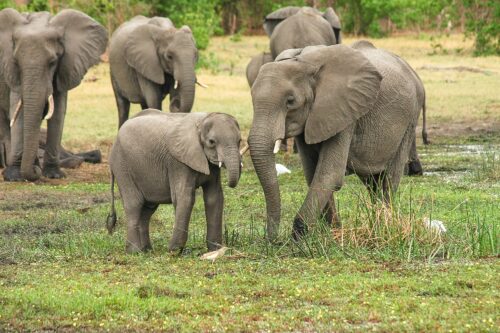Image courtesy of Pixabay.
In a village in Tamil Nadu, the southernmost state in India, a marriage ceremony is taking place. Elderly elephant caretakers Bomman and Bellie revel in their newly formed union wearing vibrant, ceremonial wreaths. But the most extraordinary sight is their groomsman and bridesmaid: elephants Raghu and Ammu who celebrate their marriage alongside them. The recently released Netflix documentary, The Elephant Whisperers, explores the interdependence between elephants and humans and gives insight into the possibilities of cross-species connections.
In the film, Bomman and Bellie first meet when the Indian forestry department assigns them to the same elephant sanctuary. Their connection flourishes through their combined efforts to take care of Raghu and Ammu, a pair of injured elephants. Through an arduous recovery process, the pair nurse Raghu and Ammu back to health. Stories similar to Raghu and Ammu are becoming more common as elephants and humans come into close contact due to crop raiding, which occurs when elephants eat crops grown by farmers. According to a review article published in Frontiers in Ecology and Evolution in 2019, four hundred people and one hundred elephants are killed in these incidents each year, which is why sanctuaries like the one run by Bellie and Bomman are pivotal in creating separate safe spaces for both parties.
Beyond just rehabilitating displaced elephants, the sanctuary also serves as a place of healing and hope for Bellie and Bomman. Raghu reminds Bellie of her daughter who passed away; when Bellie mourns her loss, Raghu wipes her tears with his trunk. For Bomman, caring for Raghu and Ammu connects him to his rich ancestral heritage, since Bomman’s father and grandfather were elephant caregivers. These heartfelt anecdotes reveal how it’s possible to foster strong familial ties through human-animal interactions.
Though this story may seem idealistic, it is important to acknowledge where the lines between narrative and reality lie. Critics of the documentary assert that the practices portrayed in the film are not compliant with wildlife rehabilitation standards. They argue that true rehabilitation requires animals to be reintroduced to nature after recovery, rather than being incorporated into human practices. According to the Asian Elephant Specialist Group, effective recovery is an intensive process consisting of three steps: planning, rehabilitation, and post-release monitoring. During rehabilitation, caretakers focus on the elephants’ ability to reintegrate, and after their release into the wild, the elephants are monitored to ensure successful assimilation. While the recovery of Raghu and Ammu may not have followed these standards, it must be acknowledged that without the help of Bellie and Bomman, they would have suffered more.
With its 2023 Oscar nomination, The Elephant Whisperers brings to light the importance of human interactions with nature and how this relationship can be mutually beneficial when approached in a mindful manner. This dialogue is vital in a world where human habitation increasingly crosses over into animal territory. After all, how we interact with our environment and animal neighbors is a choice that impacts us all.

